While Antwerp’s inner city suffers from a chronic shortage of green space, there are a number of large parks in its outer districts, most notably the Nachtegalenpark in Wilrijk and Rivierenhof, a park in the densely populated district of Deurne.
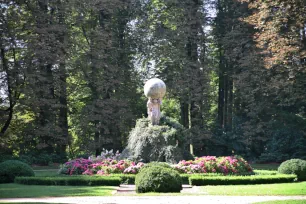
Rivierenhof, one of the largest parks in Antwerp, is especially popular during summer and on weekends, when people come here to relax or watch a performance in the open air theatre. Due to its size and distance from the city center, many visitors arrive here by bike.
History
Te Rivieren and Hooftvunder
The origin of the park goes back to the Middle Ages, when two farms in the rural village of Deurne evolved into country houses owned by wealthy citizens of Antwerp.

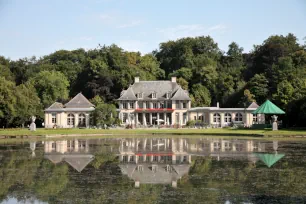
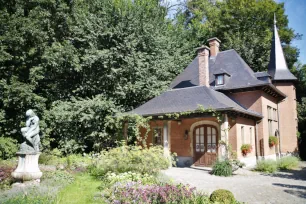
The most important of these two was Hooftvunder, a fortified farmstead complete with moat, drawbridge and 93.5 hectares of land (231 acres). In the sixteenth century, Hooftvunder was acquired by Gerard Sterck, member of one of Europe’s most important banking families. He immediately started to transform the farmstead into something that was more fitting of his status, a castle, which he named Sterckshof.
The other farmhouse, Te Rivieren, was less impressive and its domain was much smaller as well. During the sixteenth century – the golden age of Antwerp – Magnus van Bullestrate, a local merchant, purchased Te Rivieren and expanded the farmhouse into one of the area’s most impressive country houses, with an orchard and even a private brewery.
The Cogels family
At the end of the sixteenth century, during the Eighty Years’ War when Spanish troops besieged Antwerp and brought the city to ruins, most of the often bankrupted owners of the country houses around the city sold their estates.
Te Rivieren was sold to the Jesuits, while Sterckshof was acquired by a merchant who had fled to the Netherlands. In the 18th century both domains, now known as Rivierenhof, were purchased by Jan Baptist Cogels, a successful banker. Cogels decided to build a new castle at Te Rivieren. The castle was designed in a classicist style, contrasting with the medieval style of the Sterckshof castle.
A public park
The Cogels family owned the domain and castles of Rivierenhof until 1921, when it was sold to the province of Antwerp. At the time the city of Antwerp was growing quickly and the many private parks around the city were disappearing as the city expanded. The province tried to save the last surviving private parks and wanted to open them to the public, in an effort to improve the health of its citizens. The purchase of the Rivierenhof was part of this strategy, and resulted in one of Antwerp’s largest public parks.
The park today
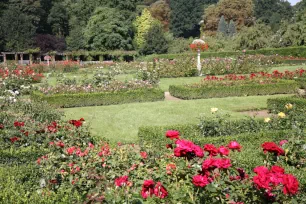
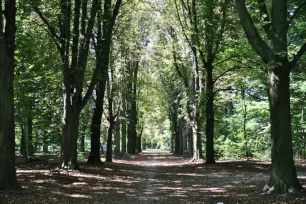
Despite the ill-advised construction of a highway at the edge of the park in the 1950s and the many sports facilities that occupy large parts of the park, there’s still plenty of nature as well as some interesting sights, in particular the two historic castles.
The most impressive castle, the Sterckshof, has an unfortunate location near a public roadway, but it nonetheless brings back the splendor of late medieval castles with its brick walls, moat, small turrets, dormers, corbie gables and spires. The castle was home to the Zilvermuseum, which owned a collection of historic silverware that is now exhibited in the DIVA museum, a diamond and jewelry museum in the historic center of the city. The Rivierenhof Castle in contrast is an example of a palatial country house, with brightly painted facades and designed in a classicist style.
Other attractions in the park include an open air theatre, an arboretum and a rose garden. Part of the park is landscaped and decorated with statues and sculptures. Other parts of the park have a natural layout and are ideal for walking. The large pond is popular for recreational fishing and there are several facilities targeted to children including a kids farm, a fairy house and a traffic park where children can learn the traffic rules.
- Next: Stadswaag
- More Sights & Attractions in Antwerp

